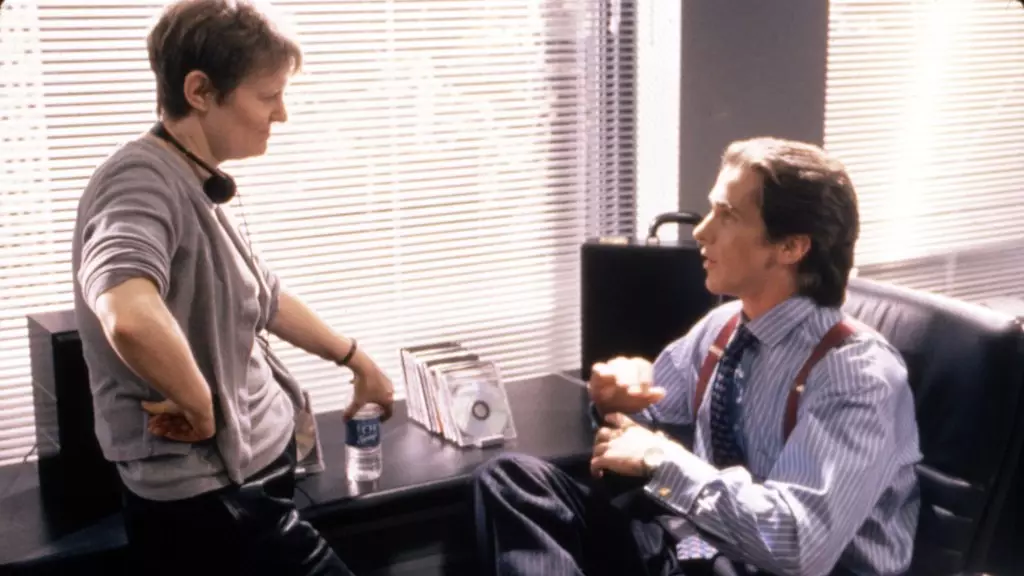Twenty-five years have passed since “American Psycho” first graced our screens, yet its relevance is more pronounced today than ever before. Directed by Mary Harron, the film emerges from the shadows of horror and dark comedy to create a scathing commentary on capitalism, masculinity, and societal decay. As Harron recently discussed with Leterboxd Journal, the endurance of this film and its misinterpretation reflect a societal crisis that has only deepened in the years following its release. The cultural landscape of America haunts us in ways previously unimagined, laying bare a brutal reality where wealth disparity has intensified under the weight of capitalism, a theme that resonates clearly through the lens of the film.
Misunderstandings and Misappropriations
Despite its critical acclaim, “American Psycho” has often been co-opted by a faction of young men—identified colloquially as “Wall Street bros”—who erroneously celebrate its themes as aspirational rather than as a profound critique of toxic masculinity. The film, Harron argues, was never a celebratory tribute to the lifestyles of the affluent but a sophisticated lampooning of the hollow values that underpin them. In truth, the movie serves as a cautionary tale, revealing the grotesque underbelly of obsession with wealth and status. Over time, the narrative has become perilously distorted, especially with figures like Patrick Bateman, the film’s protagonist, whom some misguidedly admire rather than recognize as a deeply flawed caricature designed to expose the absurdities of a predatory society.
Feminine Embrace: A New Audience
In an intriguing twist of fate, Harron has noted a revival of interest in the film among young women, a demographic that once felt alienated by its depictions of extreme masculine behavior. This shift indicates a growing desire for women to reclaim narratives that diverge from traditional portrayals of femininity. Where “American Psycho” was once shunned for its graphic portrayals, it is now being recontextualized as a statement on society’s constructs around sex and power. Young women, in coming to terms with their identity and place in the world, have begun to see through the dark humor, recognizing the film’s satire as a reflection of societal issues that remain starkly relevant today.
A Mirror to Contemporary Society
Harron’s reflections are also a grim forecast of the world we presently inhabit. She poignantly notes how much worse societal inequalities have become over the last quarter-century—a reality magnified in this era of political divisions and socioeconomic disparity. The movie’s commentary on wealth, privilege, and the celebration of toxic behaviors finds an eerie echo in contemporary culture, as we grapple with rising populism that often champions ignorance, racism, and divisiveness. The audacity of characters like Patrick Bateman, who once felt like a distant observation of absurdity, has now grown alarmingly commonplace in various socio-political discussions.
An Unlikely Legacy: Queer Perspectives
Another crucial aspect of Harron’s commentary revolves around the film’s nuanced portrayal of masculinity through a queer lens. The narrative, steeped in cultural critiques, was informed by author Bret Easton Ellis’ insights as a gay man who adeptly understood the subtext of male competition and homoeroticism within a hyper-masculine environment. The juxtaposition of attraction and repulsion, vulnerability and power, creates a layered understanding of what it means to navigate both identity and ambition in a society that often reduces individuals to their economic status. By drawing attention to these layers, Harron elucidates the intrinsic complexity in the film and challenges audiences to reconsider their interpretations.
A Future for American Psycho
As discussions continue about remaking this classic with modern sensibilities, the anticipation grows. Visionary director Luca Guadagnino’s upcoming adaptation offers a renewed opportunity to explore these themes through a contemporary lens. This new interpretation carries the potential not only to revisit the original’s chilling satire but also to expand upon it, inviting a new generation to grapple with the unyielding questions of privilege, violence, and moral ambiguity within our society. The ripple effects of “American Psycho” remind us that its critique isn’t merely an artifact of the late ’90s and early 2000s but rather a living dialogue on morality that demands to be embraced, not dismissed.

